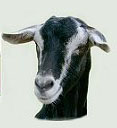|
Getting your first horse or pony
|
Nightshade
Just like the poisonous plant, henbane, nightshade is from the family of flowering plants known as Solanaceae. Nightshade is widely distributed over central and southern Europe, southwest Asia and Algeria and was cultivated in England, France and North America. They thrive in calcareous soils, waste places, quarries and near old ruins. They can also be found under the shade of trees, on wooded hills, chalk or limestone. Other common names include Belladonna, Devil’s Cherries, Naughty Man’s Cherries, Divale, Black Cherry, Devil’s Herb, Great Morel and Dwayberry They have thick roots that are fleshy and whitish growing about 6 inches long. They can grow up to a height of 2 to 4 feet, dividing above ground into three or four branches that again branch freely. The leaves are a dull dark green with predominant veins on them. On young plants there is soft downy hair on the stems and leaves. If a fresh plant is crushed it releases an undesirable odor and the leaves have a bitter taste whether fresh or dry. Nightshade has a large purplish flower that is tinged with green and is bell shaped. They also grow small red berries that shine dark, almost black, when ripe resembling small cherries. These berries are very sweet with a dark inky juice inside that is deadly if ingested. Toxic to Horses The leaves and fruit are toxic if ingested by horses, ponies, cats, dogs, goats and other farm animals. It normally affects grazing animals. Poison from nightshade can either be sudden death or within 3 to 4 days depending on the amount ingested. Most animals know to avoid this plant unless they have nothing else to eat.
Symptoms If ingested irritant effects include hyper salivation, anorexia, severe stomach issues, diarrhea, drowsiness, depression, confusion, progressive muscular weakness, numbness, dilated pupils, trembling, labored breathing, nasal discharge, rapid heartbeat, weak pulse, bradycardia, central nervous system depression and in coordination. Terminal signs include unconsciousness, shock, paralysis, coma, circulatory and respiratory depression and death. Animals less poisoned may have yellow discoloration of the skin in unpigmented areas, weakness, in coordination, tremors of rear legs, anemia, rapid heart rate and bloat.
Poisonous Plants | Horse Health
|
||||
|---|---|---|---|---|---|
The Material contained herein may not be reproduced without the prior written approval of the author. Contents & Graphics Copyright © Horses With Amie (C) 2006-. All Rights Reserved. Our work is not Public Domain. |

